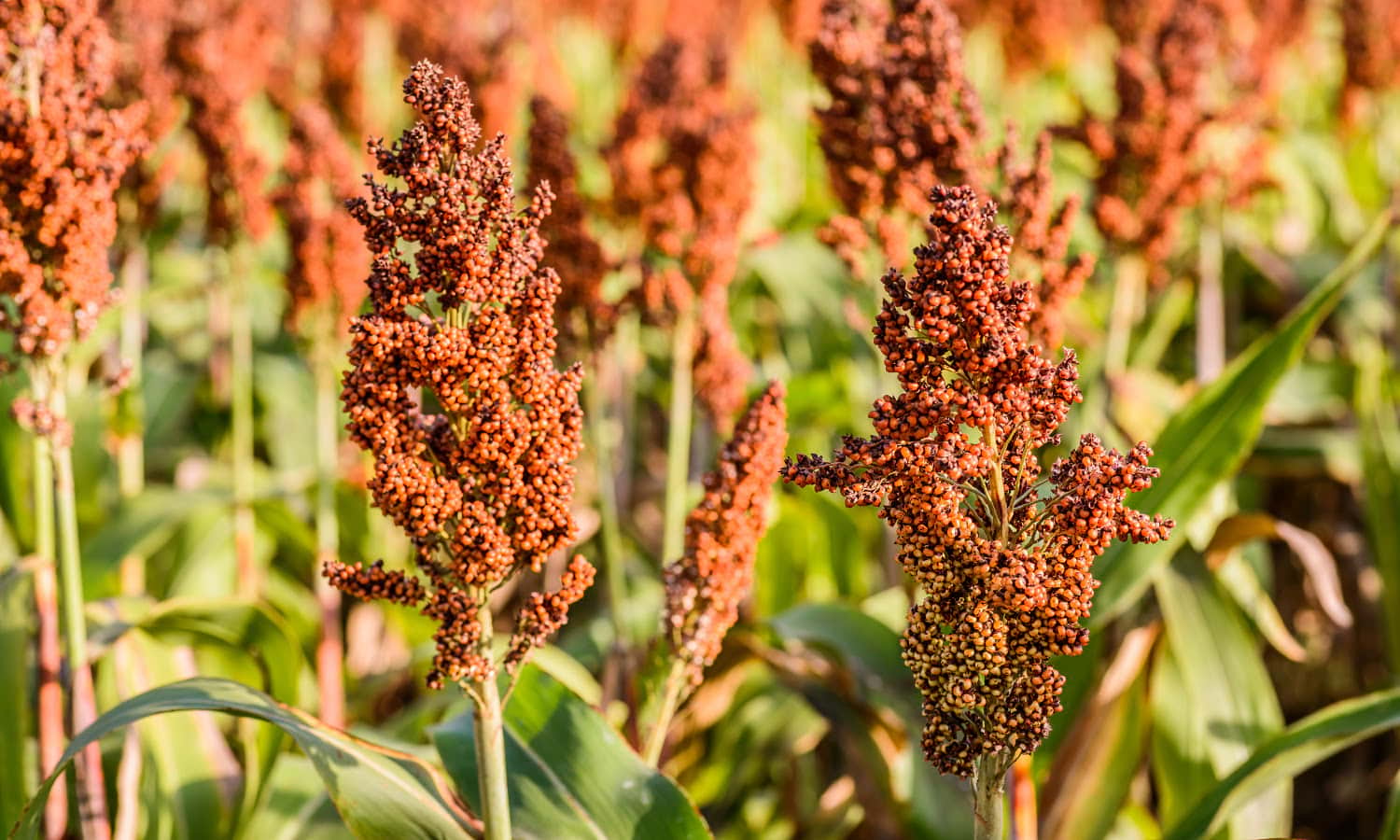Forget wheat and corn, sorghum is the cereal of the future

It’s the fifth most-produced cereal in the world. It’s gluten-free. And with global warming, could well be an alternative to declining wheat, corn and soybean yields if temperatures continue to rise. The grain we’re talking about is sorghum.
Here’s everything you need to know about this flagship food of tomorrow.
With its large green leaves, it could be mistaken for corn. But the sorghum plant has nothing to do with that particular crop. Up close, its small grains all look to be clustered on top of each other on thin stalks that are themselves intertwined with other spindly stems. Sorghum originates from Africa, more precisely, from Ethiopia and Sudan. In fact, 70% of the sorghum production area is located on this continent.
However, production of this grass is taking off in Europe, particularly in France, where 85,000 hectares are now devoted to growing grain sorghum — the variety for human consumption. This proportion grew 21% between 2019 and 2020.
On a smaller scale, the crop is also grown in Ukraine, Italy and Hungary. Sorghum stands out as the cereal of the future because the plant is more resistant to rising temperatures, and especially to periods of drought. And compared to rice and corn, sorghum is less water-intensive.
It comes in several varieties, with forage sorghum grown by farmers to feed pigs and poultry.
In some countries, sorghum is nothing new. In the West African country of Côte d’Ivoire, this cereal is turned into flour, and is found on breakfast tables in the form of an oatmeal-like concoction, served with a sauce made from tomatoes, peppers, okra and onions. In Tunisia and Algeria, it is made into a creamy milk pudding called sahlab or salep with boiling milk.
Once cooked, a hint of rose or geranium water and a little sugar is added. Sorghum flour can even be used to make pancakes, and the cereal can be used as an alternative to quinoa to make salads. It is cooked in the same way, in a pot of boiling water — count one cup for three volumes of water. In Senegal, sorghum is sautéed in a hot pan to make the grains puff up into crispy popped grains that make a tasty snack similar to popcorn.
Sorghum can be easily found in the form of flour in African grocery stores. Otherwise, organic stores usually sell bags of sorghum grains.
With 12g of protein per 100g of sorghum, the cereal appears to be a nutritious option and is already used by some vegetarians as a source of protein. It’s also recommended for diabetics because the fibre content is equivalent to 3g per 100g of sorghum, helping to reduce sugar levels and avoid glycemic spikes after meals.
Read also
Trump announces new tariff ultimatums for Mexico and the EU
Oilseed Season 2025/26: Déjà Vu or New Chapter?
Nigeria, Brazil sign $1 billion deal to boost agriculture, energy
Corn exports from Ukraine in MY 2025/26 will increase by 3 mln tons
Feed wheat supplies are disappearing from the Black Sea markets, demand prices hav...
Write to us
Our manager will contact you soon



